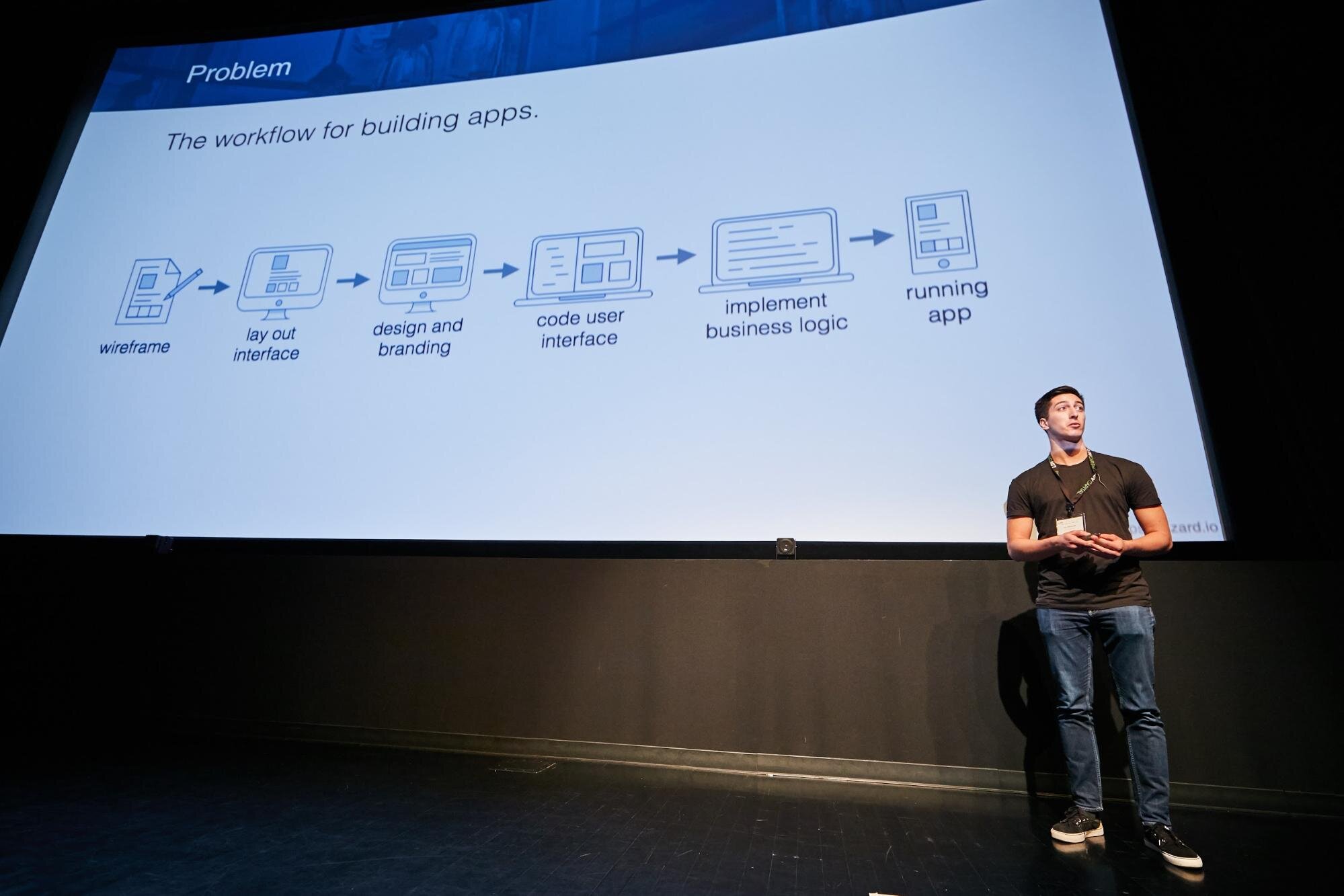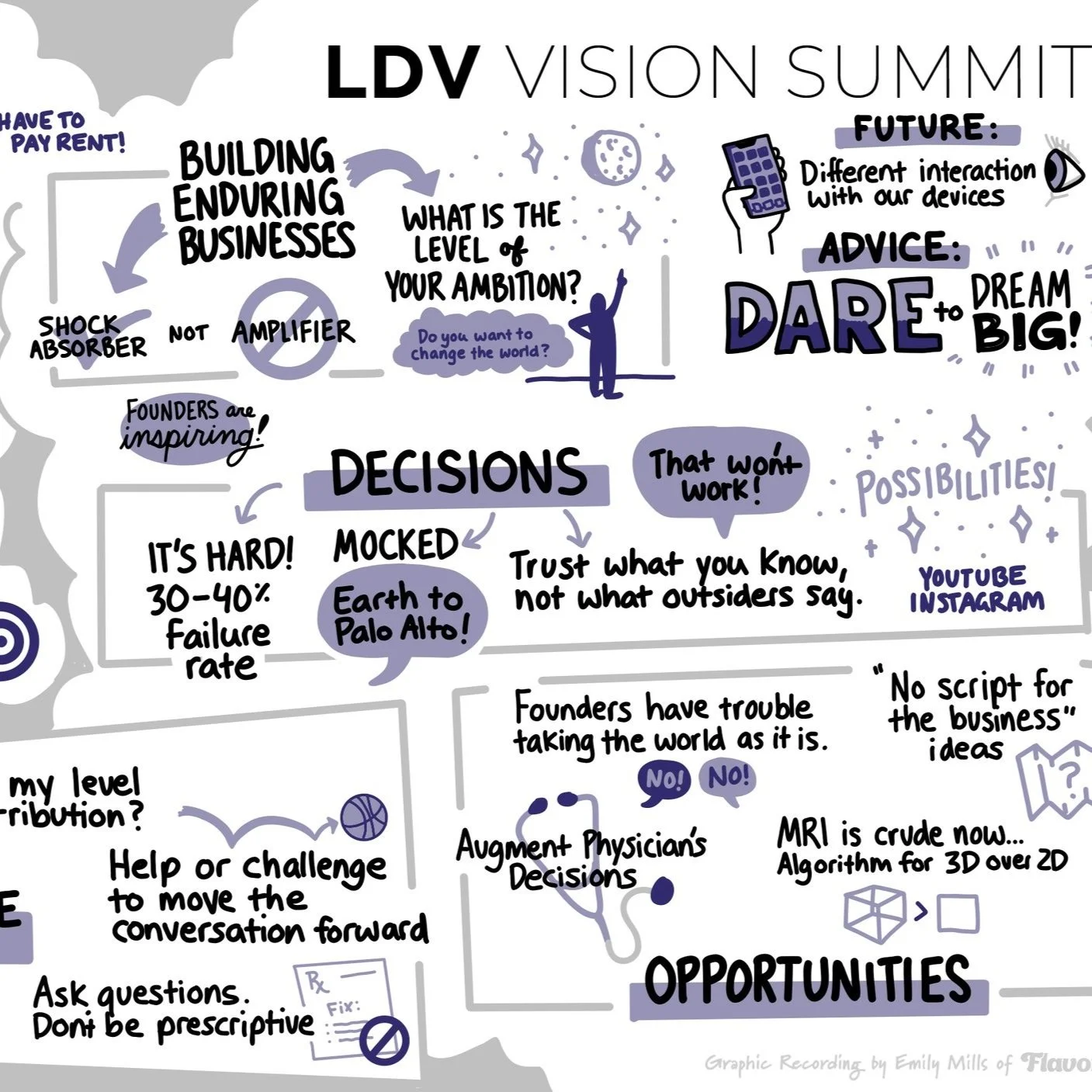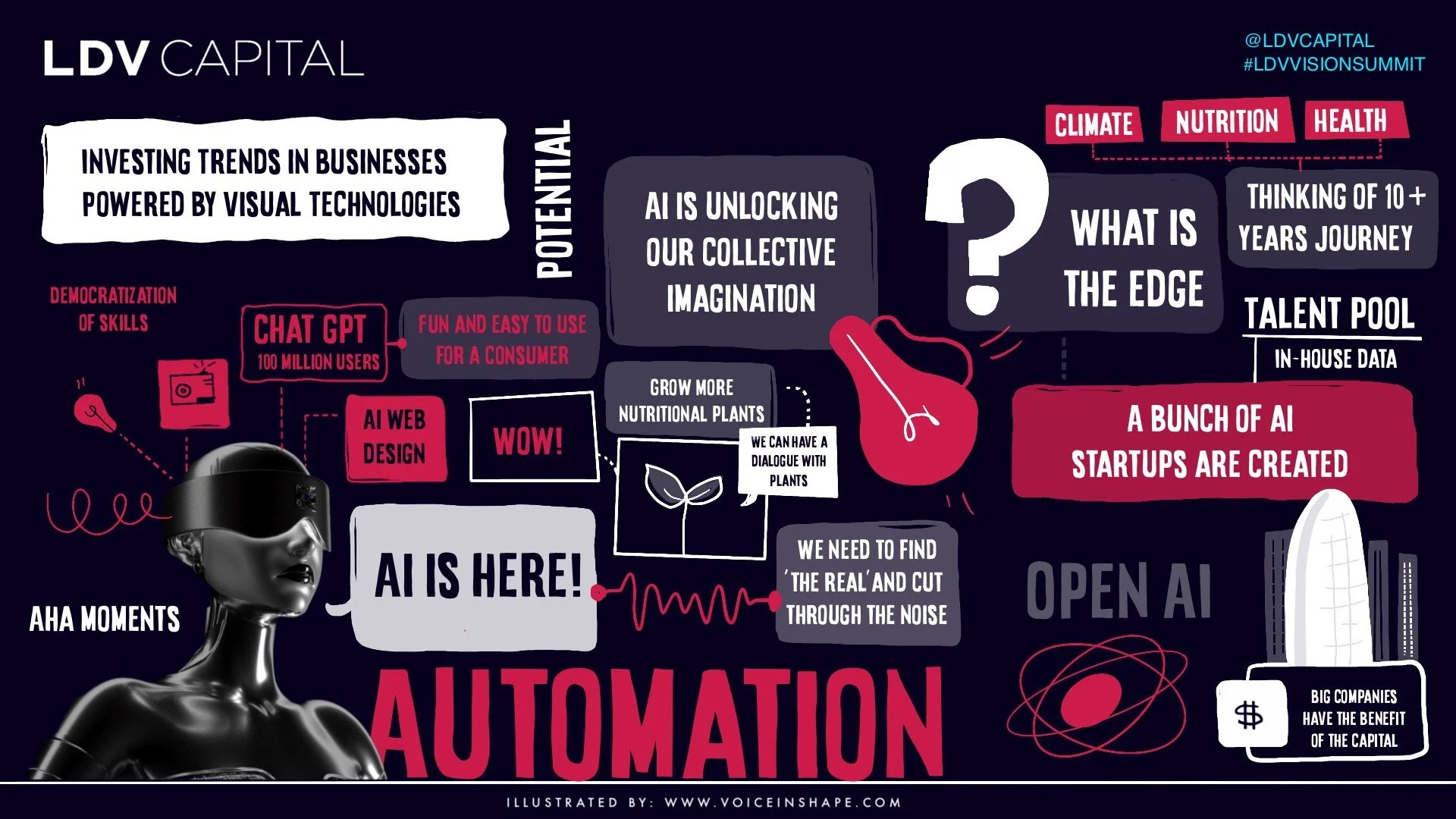With Uizard’s AI, Non-designers Create Prototypes and Designs for Apps and Websites
/Tony Beltramelli, Co-Founder and CEO of LDV Capital’s portfolio company Uizard presenting at LDV Vision Summit 2018.
Artificial Intelligence and machine learning are impacting all domains including the creative industry. These technologies are not only powering the next generation of products and tools we use in our day-to-day life but they also democratize the process of building them. Remember “there’s an app for this”? Now it’s “there’s an AI tool to help you with it!”. And if before it was everything “no-code” now it’s “no-design”. Everyone can contribute to design processes.
LDV Capital invests in people who are building businesses powered by visual technologies. We thrive on collaborating with deep tech teams leveraging computer vision, machine learning, and artificial intelligence to analyze visual data. We are the only venture capital firm with this thesis. In our portfolio, we have a range of companies revolutionizing the creative sector.
Today, we’d like to talk about Uizard. In simple terms, it’s a design tool for non-designers that lets anyone quickly and easily design and prototype digital products such as web and mobile apps. You might have seen them on ProductHunt or in the Emerging Tech Brew newsletter.
This browser-based service doesn’t require any design experience. If you can use Google Docs, Powerpoint, or Keynote, you can use Uizard. You have building blocks to move around and you don’t have to think about pixels and vectors. The idea is simple: why can’t you just upload your wireframe and instantly get your interactive prototype? Well, this is what this service is built for!
A wireframe might sound too specific. A website wireframe is a visual guide that represents the skeletal framework of a website. It’s a phone picture of your hand-drawn sketch. This sketching guide explains everything you need to know.
AI-powered service that transforms wireframes, sketches, and mockups into mobile and web app designs
Tony Beltramelli gave a keynote presentation at our 5th Annual LDV Vision Summit about the instant process of converting hand-drawn wireframes to prototypes with deep learning.
“We like to see website and application development as a straightforward process: where you have an idea –> you sketch -> you get a designer on board to create branding around it -> you give it to a developer.
In a perfect world, at the end of the day, you have a website or an application that works.
In reality, it takes forever to go from a wireframe to a running app. The truth is: you will iterate multiple times before you are ready to release the application. And because it takes time, you can't put the feature you would like to put, and you most likely have to take a shortcut, which is bad for the end-user.
We are solving this problem by teaching machines to understand user interfaces visually the same way people do. To make machines see and understand this, we leverage deep learning. This used to be science fiction just five years ago.
Prototypes are a time saver for teams building software. We are on a mission to empower anyone to turn their ideas into reality. Our first step towards this goal is the development of an AI-powered design tool: the first design tool that lets anyone quickly and easily design and prototype digital products such as web and mobile apps. The service allows teams to work more efficiently and build better products.”
We had a chance to chat with Tony and ask a couple of burning questions but before that let us introduce him a bit better: he is specialized in data science and machine learning and his work on the application of deep learning has been recognized globally and featured in international media such as WIRED, Forbes, The Huffington Post, and more. Tony was listed among the Forbes 30 under 30 in 2019.
Tony Beltramelli at our 5th Annual LDV Vision Summit in 2018.
Kat: How did it all start?
Tony: It started as a machine learning research project back in 2017. We were experimenting with deep learning and trying to train neural networks to generate computer code from a single input image. This project was called pix2code and was, to the best of our knowledge, the world’s first as far as end-to-end code generation from a single image input goes.
This inception work received significant press, it was featured on WIRED, The Next Web, Fast Company, Hacker News, among others. The implementation on Github was the second most trendy project of June 2017 ahead of big projects such as Facebook Prepack and Google Tensorflow. Uizard pioneered the development of technologies for converting images to code with deep learning and demonstrated to the tech world that AI-driven design and development was no longer science fiction. Computers finally had the potential to adapt to the way people work instead of forcing us to adapt to the way machines operate.
Our inception research paper has now been cited in more than 100 scientific papers including peer-reviewed articles from researchers in the world's most prestigious institutions such as MIT, University College London, Brown University, University of Edinburgh, The Alan Turing Institute and industrial research labs such as Google Research, Microsoft Research, Adobe Systems, IBM Research, and more. Our work has been cited as a reference in multiple patents and has sparked interest in startups and large companies to explore and develop similar AI-aided technologies. Notable examples include two technologies, both called sketch2code, developed independently at Airbnb and Microsoft.
When we started Uizard, our goal was to improve the broken designer/developer workflow that we, founders, had experienced firsthand working as web developers in the industry. Along the way, we realized that our technology was enabling a lot more than that. Instead of only helping designers and developers work together more efficiently, we realized that our AI was also empowering everyone in a given team to bring their imagination to reality easily—regardless of their design and technical background.
Kat: Can you tell us about the features that you recently shipped?
Tony: First of all, our entire solution is fully web-based and now supports live collaboration. This means that teams can collaborate in real-time in our product from their web browser regardless of where they are located in the world.
Second, alongside our public launch, we’ve released a first-of-its-kind AI-driven feature enabling anyone to easily create beautiful themes for their designs. Our tech can automatically extract colors, fonts, and styling properties from any screenshot, photograph, mood-board, URL you upload. This means that our proprietary AI can turn any source of inspiration into real interactive design components for building unique web and mobile apps.
Kat: Why is it important?
Tony: Every company today, regardless of its industry, is a software company. Every company needs to build user-friendly software either to serve its customers or to serve its staff and operations. However, the amount of people in a given organization that can efficiently design and prototype is low because of bandwidth, talent shortage, and tooling is complicated. Often, Google Slides, Powerpoint, or Keynote become the substitute to design tools for non-designers. Uizard is essentially a design tool for non-designers, we enable anyone to easily and quickly materialize, communicate, and test their ideas.
Use cases are various. We see startup founders using our product to create the first interactive prototype for their company. We see product teams in Fortune 100 Enterprise using our product for brainstorming and design sprints. We see web agencies using our product to do rapid prototyping with their customers. In some ways, our product is contributing to the democratization of design.
Kat: Who is your core user? Are there any “unexpected” groups of users?
Tony: In a nutshell, our users are people that need to find product-driven solutions to business problems but are too busy to use complicated screen design software.
Typically, they are startup founders, product/project managers, business analysts, user researchers, engineering team leads, user experience specialists.
When we launched our private beta in 2018, we thought our product was going to primarily help developers and designers so we didn’t expect to see so much interest from people with a manager/business profile!
Kat: You mentioned that you were inspired by automatic image captioning and image segmentation. In the past two years, were there any other algorithms that caught your attention?
Tony: Our team monitors academic publications closely and we try to stay up to date with the latest state-of-the-art in computer vision / artificial intelligence. Most recently, the so-called “Transformer deep learning model” is probably the technology we’ve been the most excited about.
Here at LDV, we are using Uizard to test and build some apps for internal use. It works like magic! Try Uizard for yourself!














